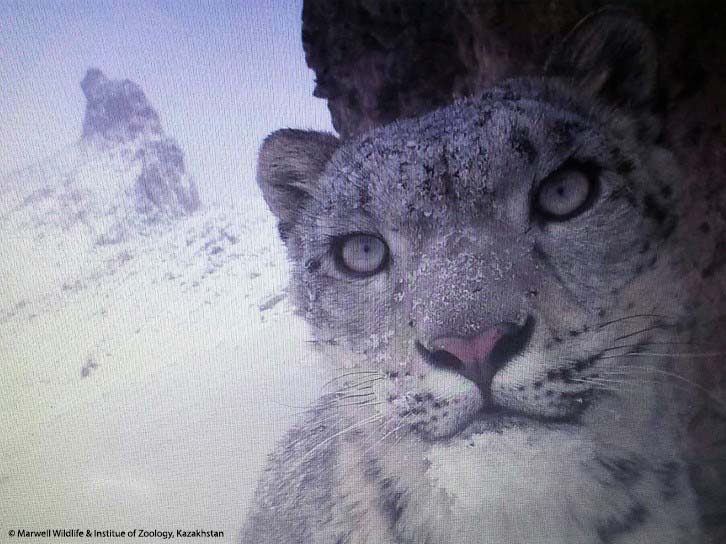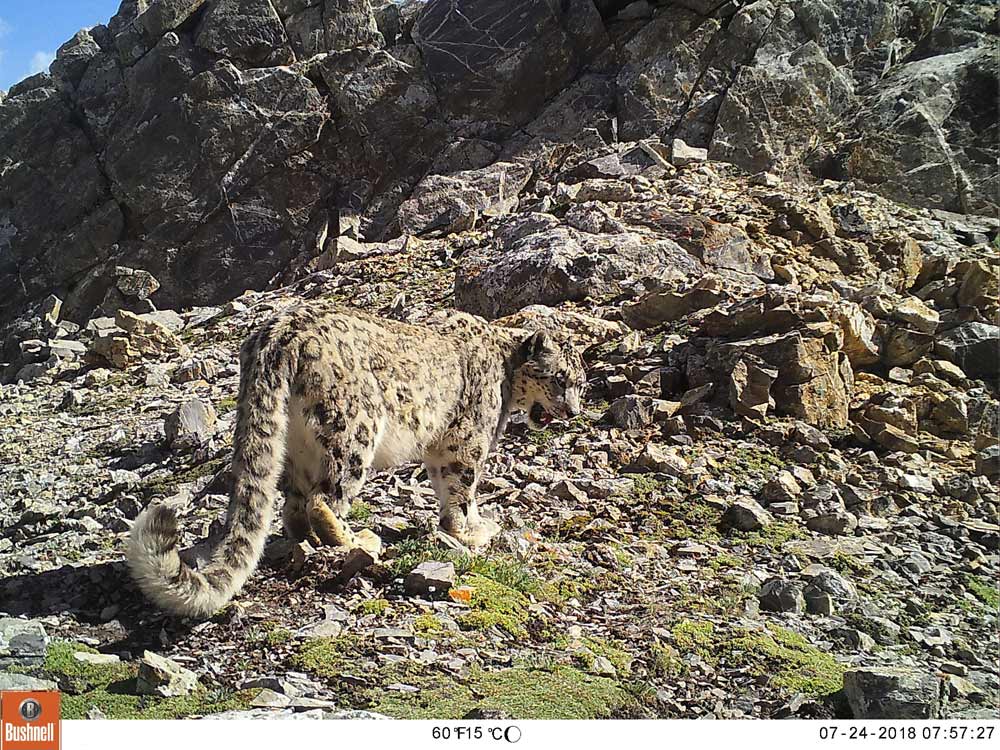International Snow Leopard Day: Marwell Wildlife research offers new insights for Central Asia’s threatened big cat
October 22, 2025
October 22, 2025

As we get ready to mark International Snow Leopard Day on 23 October, we’ve published new research revealing critical insights that add significantly to efforts to protect threatened snow leopards (Panthera uncia) across Central Asia.
Marwell Wildlife works at the forefront of international efforts to safeguard snow leopards – from developing new technologies to monitoring populations in the wild, to collaborating with remote mountain communities.
With key partners in China and Kazakhstan, our research reveals how these elusive “ghosts of the mountains” navigate vast, rugged landscapes across their range in Central Asia. These findings will inform more effective wide-ranging conservation strategies, helping to secure the future of one of the world’s most elusive predators.
Philip Riordan, Marwell’s Director of Conservation and Professor at University of Southampton, is a world-renowned expert in snow leopard conservation. Together with international colleagues he has co-authored two landmark research papers – one focused on the recently designated Qilianshan National Park in China, and the other on snow leopard movements in Kazakhstan. These studies present contrasting regions within the vast snow leopard range, characterised by high-elevation and challenging terrain.

Professor Riordan said: “This ongoing research highlights the need to understand better the ways in which snow leopards use their habitats, so that conservation management can be targeted to critical areas. As a wide-ranging species, it is vital to understand how their movements are affected by the mountainous landscapes in which they live. Maintaining population connectivity across their range remains key to protecting this species. As we celebrate International Snow Leopard Day, this combined work provides a timely reminder of the vast scales over which the snow leopard exists and the urgent need to collaborate and secure conservation across international borders.”
The research on Qilianshan National Park highlights its critical role in providing protection for core snow leopard habitats and movement corridors. However, findings reveal that only 40% of core habitats and 50% of key movement corridors lie within the park’s boundaries. The study recommends expanding existing park boundaries or creating new protected areas to safeguard the remaining landscapes vital to the species’ survival.
The second study, focusing on snow leopard movement in Kazakhstan, examined the Dzungarian Basin, a natural barrier between populations in China and Kyrgyzstan. While Kazakhstan was found to have fewer core habitat areas, it provides essential “stepping stone” links across these mountains that keep snow leopard populations connected across borders in an important region for the species.
Together, the studies underline the importance of habitat connectivity for wide-ranging species such as snow leopards, which frequently roam far beyond the boundaries of protected areas. The data is also already being used to advise policy and management decisions in China and Kazakhstan, informing where new parks and other protection measure should be focused, and where corridors should be maintained or even restored.

These findings build on extensive research and actions that are reshaping conservation strategies on the ground, including driving the development of AI-powered monitoring tools to refine camera trapping and improve tracking of big cats across remote mountain landscapes. Professor Riordan added: “Snow leopards don’t respect borders, and neither should our conservation strategies. We need to protect the spaces between the parks just as much as the parks themselves.
“We’re at a turning point. With the right technology, political will, and public support, we can secure the snow leopard’s future – not just in small fragments, but across its full range.”
Snow leopards are classified as Vulnerable on the International Union for Conservation of Nature’s Red List, with approximately 3,000 mature individuals remaining in the wild, although this could be an underestimate.
Marwell’s success with snow leopard conservation builds on decades of science-led research, collaboration and education. As a conservation zoo and charity dedicated to education and delivering hands-on conservation worldwide, our work focuses on safeguarding endangered species and restoring ecosystems both in the UK and internationally. Ongoing field conservation projects include work with Grevy’s zebra, scimitar-horned oryx, slender-horned gazelle, tigers, snow leopards, Przewalski’s horses, white-clawed crayfish, sand lizards, and Partula snails.